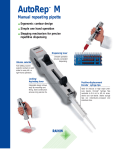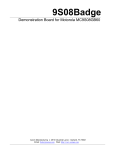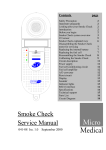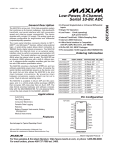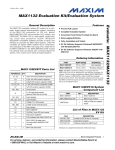Download Respiratory Pressure Meter Service Manual
Transcript
Contents page Introduction 3 Operation 3 Respiratory Pressure Meter Layout 4 Cleaning and Maintaining the Respiratory Pressure Meter 5 SNIP MIP / MEP OFF Disassembling the Respiratory Pressure Meter 5 Reassembling the Respiratory Pressure Meter 5 Circuit Description 6 Parts List 8 Technical Support 10 Circuit Diagram 11 Respiratory Pressure Meter Service Manual 064-22 Iss. 1.0 October 2004 Respiratory Pressure Meter Service Manual Information in this document is subject to change without notice and does not represent a commitment on the part of Micro Medical Limited. Only the parts supplied by Micro Medical Limited should be used to complete the service operation described in this manual. If in any way you feel unsure about the successful completion of the service operation you should contact Micro Medical Limited or its appointed agent in your country or region and arrange the despatch of the product to a Micro Medical Limited Service Centre. Copyright 2004 by Micro Medical Limited All rights reserved Drawing no. 064-22 Version 1.0 October 2004 All other products are trademarks or registered trademarks of their respective owners. 2 Introduction The Micro Medical respiratory pressure meter (RPM) is a hand held instrument designed for rapid assessment of inspiratory and expiratory muscle strength. The unit can measure the maximum inspiratory and expiratory mouth pressures, MIP and MEP, and the Sniff Nasal Inspiratory Pressure, SNIP. The result of each measurement is presented in units of cmH2O gauge pressure on the liquid crystal display screen. The MIP and MEP measurements represents the maximum pressure sustained for 1 second. The SNIP measurement represents the peak pressure detected in the manoeuvre. 3 Respiratory Pressure Meter Layout 1. Respiratory Pressure Meter PCB 2. Top Moulding 3. Bottom Moulding 4. Mouthpiece Holder 5. Retaining ring 6. 55mm of 1/16" I.D. 1/8" O.D. 'Tygon' tubing 7. Nylon barb connector 8. Countersunk screws 9. Plastic bolt M5 x 6mm 10. Cable tie 8 7 5 4 3 2 9 6 1 Fig.1 8 10 4 Cleaning and maintaining the Respiratory Pressure Meter The Micro Medical Respiratory Pressure Meter requires no routine maintenance or servicing. Calibration is factory set and should remain constant throughout the lifetime of the device. However the Respiratory Pressure Meter can be calibrated, if in doubt by the Micro Medical Service Centre. Disassembling the Respiratory Pressure Meter. If the Respiratory Pressure Meter becomes faulty then the following procedure is needed to investigate the fault. 1. Turn the unit face down and slide back the battery cover. 2. Remove the battery and place to one side. 3. Remove the 2 screws from the bottom moulding (Item 8) and put to one side. 4. Turn the unit face up and ease the top moulding from the bottom moulding and turn the top moulding to reveal the PCB as shown in Fig.1 (page 4). 5. Remove the PCB from the bottom moulding and put the bottom moulding to one side. 6. The Respiratory Pressure Meter is now ready for fault finding. Reassembling the Respiratory Pressure Meter 1. Place the PCB into the bottom moulding and route the battery lead as shown in Fig.1. 2. Position the top moulding on top of the bottom moulding and push together (ensure that the battery leads are not trapped). 3. Turn the unit face down and secure the unit with the retained screws. 4. Refit the PP3 battery ensuring correct polarity. 5. Slide on the battery cover. 6. The Respiratory Pressure Meter is now ready for operation. 5 Circuit Description Overview A piezo resistive pressure transducer monitors pressure at the mouthpiece holder. After conditioning, the signal from the pressure transducer is applied to a 12 bit analogue to digital converter. A micro controller reads the A/D converter and after applying a calibration factor displays the result on an LCD, which is directly driven from the controller. The measurement displayed is the maximum pressure recorded over a one second interval when the unit is switched to the MIP/MEP position. When the unit is switched to the SNIP position the peak pressure is displayed Power Supply and battery monitoring The Mouth pressure meter is powered by a PP3 9V Alkaline battery with reverse polarity protection, D1, and is monitored by channel 2 of the A/D converter through the resistive divider R13 and R14. Battery power is supplied to the circuit via TR2. A bi-stable circuit consisting of U2, U9, R6, R7, C5 and R17 controls TR2. The bi-stable circuit can be switched to the off state (pin 4 of U2 high) by either the front panel switch, SW1A, or by the micro controller via TR1 pulling pin 1 of U2 low. The unit is switched on when SW1A is set to the middle position, pulling on side of R7 low and applying a momentary pulse to pin 2 of U9 through the AC coupling action of R6 and C15. The nominal 9 volt supply from the battery is applied to the low drop-out 5 volt regulator, U4, which supplies the rest of the circuit. Pressure Sensor Conditioning Circuit The mouth pressure meter consists of an internally temperature compensated solid-state pressure transducer (U5). The instrumentation amplifier, U6, amplifies the differential signal from the pressure transducer. The gain of U6 is adjusted by the calibration potentiometer VR1 that is accessible externally. The reference pin of U6 and the A/D converter, U7, are driven by the output of U3B at a voltage derived from the reference output of the A/D converter. The signal from U6 is passed through a filter consisting of U3A, R3, R4, C3 and C1. This is further filtered by R30 and C30 before being applied to Channel 0 of the A/D converter. Display The display is a 3 1/2 digit custom LCD. A square wave of approximately 30 HZ is continuously applied to each segment and the back plane (BP). To turn a segment off, the square wave applied to it is in phase with the square wave applied to the back plane. To turn a segment on, the square wave applied to it is in anti-phase with the back plane. 22 of the segments and the back plane are driven directly from ports PA, PB and PC of the micro controller, U1. The remaining 4 segments are connected to the outputs of a serial to parallel converter, U11. The serial peripheral interface of U1 is used to clock data into U11. The clock signal is inverted 6 by TR3 to obtain the correct polarity. The pull-up resistor for TR3 is connected to the chip select line of the A/D converter, which is also on the serial peripheral interface, disabling the clock signal when the A/D converter is being accessed by the micro controller. Analogue to Digital converter The A/D converter, U7, is a 4 channel, 12-bit, serial device with internal reference and communicates with the micro controller using the serial peripheral interface. The A/D converter has an input range of COMVREF/2 to COM+VREF/2 where VREF is the internal reference voltage of 2.5 Volts. The voltage applied to COM, pin 6, is approximately 1.5 volts. This is derived from VREF, pin 8, using a potential divider, R1 and R25, and a buffer amplifier, U3B. The input range for the A/D converter is therefore 0.25 to 2.75 volts. Channel 0, pin 2, is used to measure the pressure signal. Channel 1, pin3, is connected to the common pin (6) and to the reference pin of the instrumentation amplifier, U6, and is only read during factory set-up. Channel 2, pin 4, is connected to the reference output and is only read during factory set-up. Channel 3, pin 5, is used to read the battery terminal voltage via the potential divider, R13 and R14. Micro controller The micro controller, U1, is an 8-bit device with integrated RAM, FLASH program memory storage, and power on reset circuitry. The controller communicates with the A/D converter to measure the pressure signal and monitor the battery voltage using its serial peripheral interface bus. This synchronous bus consists of a clock line, pin 15, a data transmit line, pin14, and a data receive line, pin 13. The controller directly controls 22 of the display segments and the back plane from ports PA, PB and PC. The remaining 4 segments are connected to the outputs of a serial to parallel converter, U11. The serial peripheral interface is used to clock data into U11. The buzzer is driven from port D, pin 19, with a square wave at approximately 1 kHz. The buzzer is driven in a push-pull arrangement using the inverter U8. The controller is factory programmed using the on-board connector CON1. The controller is set to program mode by activation of the reed switch, SW2. Communication with PC software is achieved through a RS232 interface. The converter, U10, has on-board circuitry to generate the required +/- 10 Volts and is connected to the serial interface of the controller, pins 9 and 10. 7 Parts List Designation U1 U2 U3 U4 U5 U6 U7 U8 U9 U10 U11 TR1 TR2 TR3 D1 DISPLAY R1 R2 R3 R4 R5 R6 R7 R8 R9 R10 R11 R12 R13 R14 R15 R16 R17 R18 R19 R20 R21 R22 R23 R24 R25 R26 R27 R28 R29 R30 VR1 C1 Description. Motorola OPT Microcontroller Single surface mount NAND gate Texas Instruments dual low power OP-Amp Low drop out surface mount 5 volt regulator 5 PSI pressure transducer Analogue devices instrumentation amplifier, Maxim 12 bit 4 channel surface mount serial D/A Single surface mount NAND gate Single surface mount NAND gate Maxim RS232 transceiver 8-bit SIPO shift register Rhom NPN surface mount transistor Zetex PNP surface mount transistor Rhom NPN surface mount transistor Schottky diode. 3 1/2 digit custom display 22K Surface mount resistor 0.125 watt 1% size 0805 1.5K Surface mount resistor 0.125 watt 1% size 0805 5.6K Surface mount resistor 0.125 watt 1% size 0805 22K Surface mount resistor 0.125 watt 1% size 0805 10K Surface mount resistor 0.125 watt 1% size 0805 1M Surface mount resistor 0.125 watt 1% size 0805 1M Surface mount resistor 0.125 watt 1% size 0805 10K Surface mount resistor 0.125 watt 1% size 0805 10K Surface mount resistor 0.125 watt 1% size 0805 1K Surface mount resistor 0.125 watt 1% size 0805 10 ohm Surface mount resistor 0.125 watt 1% size 0805 10K Surface mount resistor 0.125 watt 1% size 0805 100K Surface mount resistor 0.125 watt 1% size 0805 39K Surface mount resistor 0.125 watt 1% size 0805 10M Surface mount resistor 0.125 watt 1% size 0805 10K Surface mount resistor 0.125 watt 1% size 0805 1M Surface mount resistor 0.125 watt 1% size 0805 10K Surface mount resistor 0.125 watt 1% size 0805 Not used Not used Not used Not used 10K Surface mount resistor 0.125 watt 1% size 0805 10K Surface mount resistor 0.125 watt 1% size 0805 33K Surface mount resistor 0.125 watt 1% size 0805 Not used 100K Surface mount resistor 0.125 watt 1% size 0805 330K Surface mount resistor 0.125 watt 1% size 0805 1.2K Surface mount resistor 0.125 watt 1% size 0805 10K Surface mount resistor 0.125 watt 1% size 0805 Bourns 1k 25 turn potentiometer. 2.2nF ceramic surface mount capacitor, size 0805 8 C2 C3 C4 C5 C6 C7 C8 C9 C10 C11 C12 C13 C14 C15 C16 C17 C18 C19 C20 C21 C22 C23 C24 C25 C26 C27 C28 C29 C30 C31 SW1 SW2 J1 SPK1 X1 22pF ceramic surface mount capacitor, size 0805 6.8nF ceramic surface mount capacitor, size 0805 1uF ceramic surface mount capacitor, size 0805 22pF ceramic surface mount capacitor, size 0805 1uF ceramic surface mount capacitor, size 0805 1uF ceramic surface mount capacitor, size 0805 1uF ceramic surface mount capacitor, size 0805 1uF ceramic surface mount capacitor, size 0805 0.1uF ceramic surface mount capacitor, size 0805 10nF ceramic surface mount capacitor, size 0805 33nF ceramic surface mount capacitor, size 0805 0.1uF ceramic surface mount capacitor, size 0805 0.1uF ceramic surface mount capacitor, size 0805 0.1uF ceramic surface mount capacitor, size 0805 0.1uF ceramic surface mount capacitor, size 0805 0.1uF ceramic surface mount capacitor, size 0805 0.1uF ceramic surface mount capacitor, size 0805 0.1uF ceramic surface mount capacitor, size 0805 0.1uF ceramic surface mount capacitor, size 0805 0.1uF ceramic surface mount capacitor, size 0805 1uF ceramic surface mount capacitor, size 0805 0.1uF ceramic surface mount capacitor, size 0805 0.1uF ceramic surface mount capacitor, size 0805 33pF ceramic surface mount capacitor, size 0805 33pF ceramic surface mount capacitor, size 0805 33pF ceramic surface mount capacitor, size 0805 10uF Tantalum capacitor size A. 1uF ceramic surface mount capacitor, size 0805 1uF ceramic surface mount capacitor, size 0805 Not used double pole 3 position slide switch reed switch. 3.5mm Stereo jack socket piezo ceramic sounder 32.768 KHz crystal, WATCH package. 9 Technical Support Great Britain and World Headquarters Micro Medical Ltd. PO Box 6 Rochester Kent ME1 2AZ Telephone Fax Web Site Email +44 (0)1634 893500 +44 (0)1634 893600 http://www.micromedical.co.uk [email protected] [email protected] Contact Micro Medical Ltd. for the local agent in your region or country for local service. 10 1 2 1uF 39K R14 TR2 VIN VOUT C9 1uF C7 1 2 3 4 5 6 7 8 SW2 Reed Switch C6 1uF 1 U4 LM2931M-5.0 0.1uF C13 8 C8 1uF 100K 2 R13 2 3 3 FMMT591 2 3 3 1 2 5V R11 10R 5V J1 JACK MAX3221CAE EN FOFF C1+ 5V V+ C1 - TO C2+ FON C2 - TIN V- INV RIN RO U10 R23 10K 1 4 C14 0.1uF R16 10K 4 U2 16 15 14 13 12 11 10 9 5V 33nF C12 R8 10K + 2 1 2 1 C2 22pF 10nF C11 C28 10uF BU4S11 U9 BU4S11 5 3 5 3 R7 1M 42 1 11 44 43 10K R9 SW1B 12 13 14 15 18 19 20 21 9 10 30 31 40 41 VDD 17 16 R15 10M RESET IRQ C24 0.1uF 0.1uF C10 5V C5 22pF R28 330K X1 CRYSTAL_32 0.1uF R6 1M C15 R17 1M 2 1 SW1A SLF2300 PC6 PC5 PC4 PC3 PC2 PC1 PC0 PA0/KBD0 PA1/KBD1 PA2/KBD2 PA3/KBD3 PA4/KBD4 PA5/KBD5 PA6/KBD6 PA7/KBD7 R27 100K 2 1 4 BU4S11 U8 32 PTA0 33 34 35 36 37 38 39 22 23 24 25 26 27 28 29 8 7 6 5 4 3 2 R19 10K R18 10K PTA7 U11 1 2 3 4 5 6 7 R22 10K B1 C1 D1 E1 DP1 C2 D2 E2 DP2 C3 D3 E3 1 NC NC NC NC SNIP NC BP R20 10K C23 0.1uF SIN VCC SIN QH QA QG QB QF QC QE QD RES GND CLK 14 13 12 11 10 9 8 DISPLAY_RPM A1 F1 G1 B2 A2 F2 G2 NC B3 A3 F3 G3 NC NC MIP MEP NC BAT NC BP DISPLAY PTC1 PTC0 PTB0 PTC3 R26 10K 20 19 18 17 16 15 14 13 12 11 10 9 8 7 6 5 4 3 2 1 DTC114EKA TR1 1 SPEAKER SPK1 MC68HC908GP32CFB(44) R10 1 5V 2 1K PD0/SS PD1/MIS0 PD2/MOS1 PD3/SPSCK PD4/T1CH0 PD5/T1CH1 PD6/T2CH0 PD7/T2CH1 VDDa VSSa PB0/AD0 PB1/AD1 PB2/AD2 PB3/AD3 Vddad/Vrefh PB4/AD4 Vssad/Vrefl PB5/AD5 PB6/AD6 PE0/TxD PB7/AD7 PE1/RxD 5V GND CGMXFC RST IRQ OSC1 OSC2 U1 4 ZHCS750 BAT1 PP3 6 8 3 2 D1 7 3 5 5V 21 22 23 24 25 26 27 28 29 30 31 32 33 34 35 36 37 38 39 40 R21 10K DTC114EK TR3 1 PTB0 IRQ PTC0 PTA0 PTC1 PTC3 RESET PTA7 R29 1K2 VDD CON10 1 2 3 4 5 6 7 8 9 10 CON1 U5 SDX05D4 5V Date: File: A4 Size Title 1uF C4 10K R12 OUT- OUT+ 5 2 1 3 - + 6 5V REFADJ VREF U7 9 6 2 3 4 5 1k 22k R4 3 2 + - R24 10K C31 1 U3A 1uF 33K C29 R25 33pF C27 10k R30 C30 1uF 10K R5 TLC27L2CP TLC27L2CP U3B 5 + 7 6 - C1 2n2 6n8 1uF C22 20-Oct-2004 G:\Archive\064-01.SCH 064-01 Sheet 1of 1 Drawn By: A.F. Sadler Revision 1.7 Respiratory Pressure Meter - Circuit diagram 1 C26 33pF 0.1uF 0.1uF C3 C21 C20 MAX1246BCEE COM CH0 CH1 CH2 CH3 2 VR1 0.1uF 0.1uF R3 5k6 C19 C18 R2 1k5 3 0.1uF C17 DIN DOUT SCLK CS SSTRB SHDN Number R1 22K 8 14 12 16 15 13 7 C25 33pF 2 U6 AD623 3 5V 0.1uF C16 5V Decoupling Capacitors 7 4 1 5 3 5 1 8 11 DGND 6 7 1 3 2 1 VDD AGND 10 8 4 11











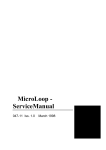
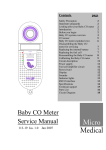
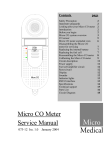
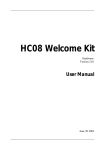
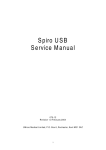

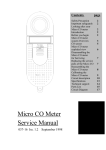

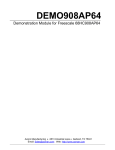
![[DRAFT] DEMO908JL16 User`s Manual](http://vs1.manualzilla.com/store/data/005639706_1-2a84cd2ce2f0b318fdb7aae7896f2a79-150x150.png)
